UNO PITCHING LAB TECH SHOWCASE
The UNO Pitching Lab provides the most accurate and sophisticated analysis of pitching mechanics, rivaling the best in the world.
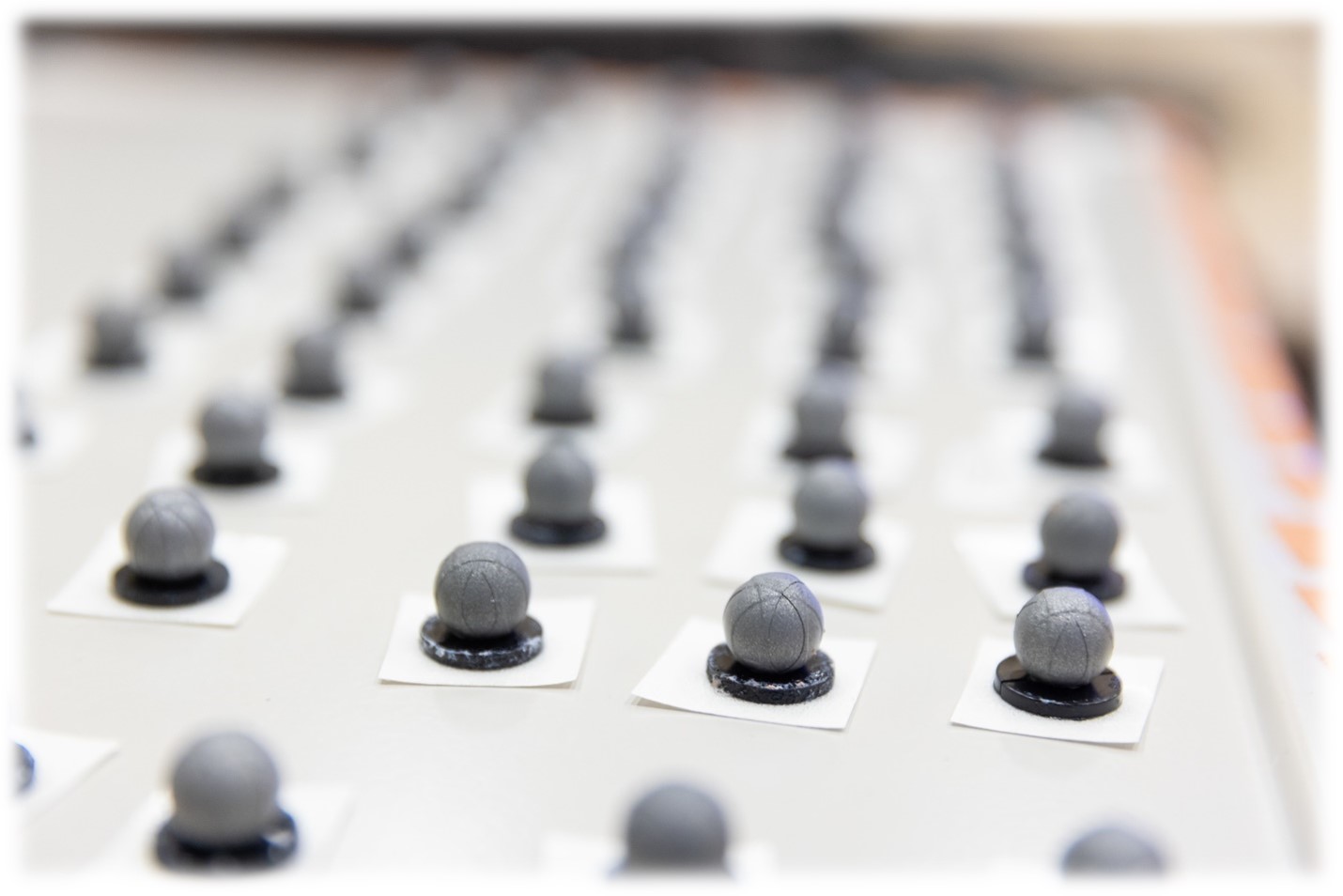
Obviously, a big staple within our lab is the vast range of technology we use. Here at the UNO Pitching Lab, we pride ourselves on the accuracy of our data. This makes it a no-brainer that we employ the most accurate technology out there which is what our athletes will often see as they receive their pitching evaluations. Within this post, I’ll be introducing you to everything we use and provide background information regarding its relevance in deciphering your pitching mechanics. Equipment will be introduced in the order athletes come across it within the lab, starting with the technology used by our certified athletic trainers during the clinical analysis.
Diagnostic Ultrasound
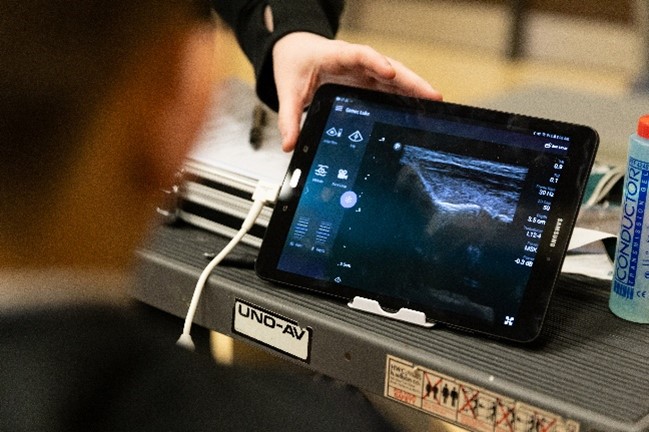
We use a standard ultra-portable diagnostic ultrasound (DUS) unit to assess the length and thickness of the anterior ulnar collateral ligament (AUCL) and the joint length of the medial elbow for each pitcher. Specifically, we use a Philips Lumify Handheld Ultrasound unit with a Lumify L12-4 linear array transducer. This unit has been a fantastic asset in our ability to further examine the health of the UCL ligament (responsible for the infamous Tommy John Surgery). It has a 34.5 mm field of view and can scan up to 12 cm deep into the tissue, perfect for viewing tissues close to the skin such as the UCL.
Grip & Pinch Dynamometers
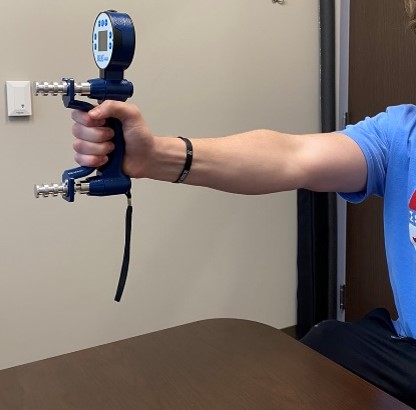
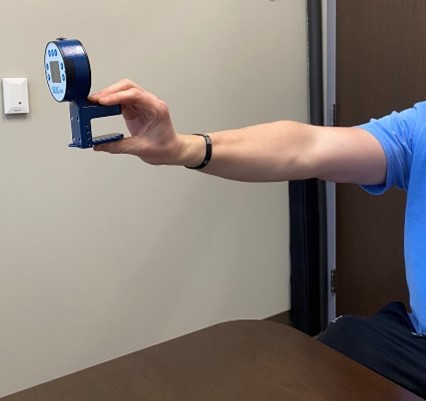
The forearm plays a vital role in the success and longevity of our throwing careers. It helps protect and stabilize the elbow from intense loading during every throw and also helps us create spin on the baseball. Strong forearm muscles can more effectively stabilize the elbow and protect it from repetitive loading compared to weaker muscles and also apply more pressure to the ball through our fingers. This is why we test the pinch and grip strength for each pitcher.
For each assessment, we use either a BIMS Digital 5-Position Grip Dynamometer or BIMS Digital 5-Position Pinch Dynamometer by Baseline to assess forearm strength. These dynamometers use load-cell digital technology which provides more accurate and consistent measurements compared to standard hydraulic units. Strength, measured in kilograms or pounds, is shown in real-time with the mean, standard deviation, and coefficient of variance calculated instantly!
Shoulder Strength Dynamometer
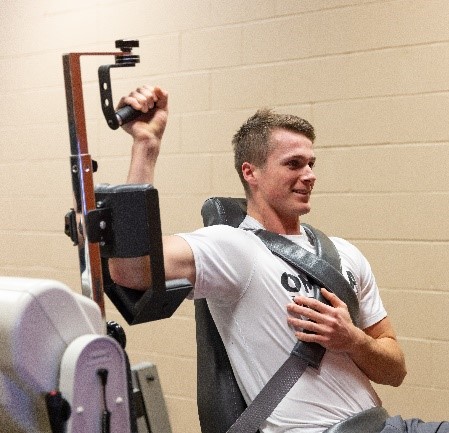
The last critical piece of equipment we use within our clinical testing comes in the form of our System 4 Pro Biodex Dynamometer. The Biodex unit, a longtime staple in accurately and reliably capturing strength data within the research and sports science field, is responsible for detailing shoulder strength outcomes for each pitcher. Testing can be done in five modes: isokinetic resistance, reactive eccentric, passive motion, isometric, and isotonic. Some more advanced metrics for our fellow tech enthusiasts can be found in Table 1.
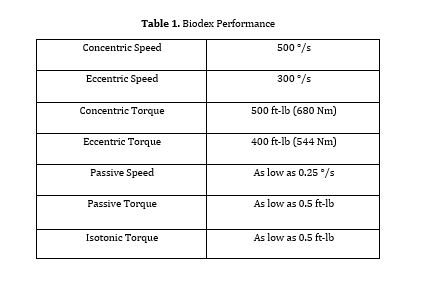
The reports we receive from our shoulder strength assessment are phenomenal, detailing time series data (graphs depicting how variables change throughout the test), peak torque, total work, average power, and more! Not only do we compare these outcomes between the throwing and non-throwing arms, but we also analyze them between strength and endurance tests!
Motion Capture Cameras
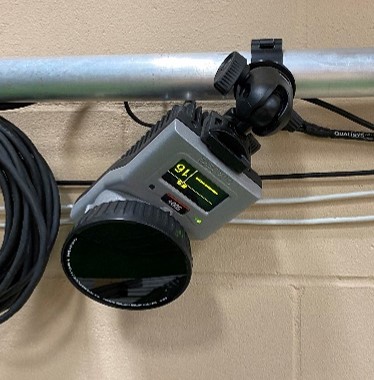
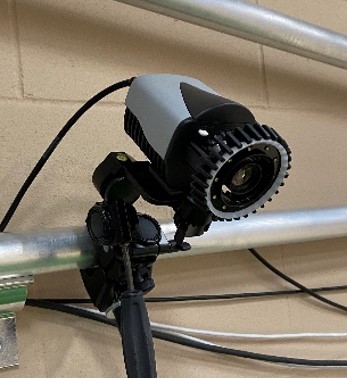
Our pitching mound is surrounded by a whopping twenty motion capture cameras from Qualisys. This consists of ten Oqus 500+ marker-based cameras (if this confuses you, read my prior post), eight Miqus Hybrid cameras (which can perform both marker-based and markerless motion capture), and two highspeed Miqus Video cameras. All of these cameras are linked together and communicate with one another during every pitch! If you were wondering, yes, that’s a lot of data traveling into our computer after every throw.
The Oqus 500+ cameras can collect 4 MP at 179 Hz with a full field of view (FOV) while in Normal mode and 1 MP at 355 Hz with a full FOV while in High-speed mode (which is what we use). With a reduced FOV, these cameras can collect 10,000 frames per second! This means that we could get up to 10,000 data points per second (although we capture at a much, much slower rate as that would be overkill for pitching)!
As for the Miqus cameras, both the Hybrids and Videos collect video at 30 frames per second, and luckily for us, provide in-camera video compression (video files are massive!). The marker-based qualities of the Hybrids are impressive, as they can collect 2 MP at 340 Hz while in Normal mode or 0.5 MP at 667 Hz while in High-speed mode (both FOV). Similar to our Oqus cameras, the Hybrids can collect marker data at 10,000 frames per second!
Force Plates
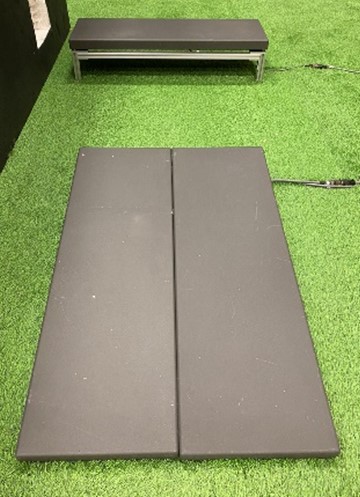
The other key components of our pitching mound are the force plates embedded within it. We use three Bertec force plates to capture the amount of force athletes exert to push off the rubber and land at stride foot contact. These force plates are fantastic in quantifying the amount of force each athlete creates alongside showing the directionality of forces too. Each plate goes through an extensive, rigorous calibration process to make sure they measure force as precisely as possible. The max load each force plate can handle is a whopping 10,000 pounds! That’s not all, data can be captured at insanely high sampling frequencies too, going well beyond 1,000 Hz! This is incredibly important as athletes create and exert force extremely fast, so the faster our force plates can collect the data, the more data points we see, and thus, better analysis of an athlete’s movement profile.
Ball Velocity Radar
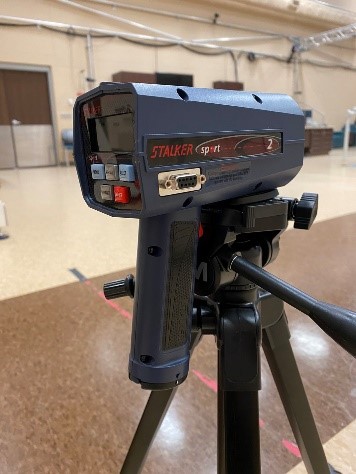
As you would expect from any baseball pitching facility, we use throwing velocity as one of our key performance indicators. Due to this, we need something that is extremely valid and reliable. The Stalker Sport 2 is our go-to for measuring how fast each pitch is. This radar gun is similar to what you would expect to see being used behind the plate of any major baseball event and is a staple within the scouting community. The Stalker 2 Sport is an extremely qualified radar gun, reading speeds up to 150 miles per hour with a ± 3% accuracy. Recorded velocities are displayed on a large, bright LED display behind our target allowing instant feedback on each pitch’s speed. Even more so, velocities can be reported as whole numbers and tenths!
Rapsodo Units
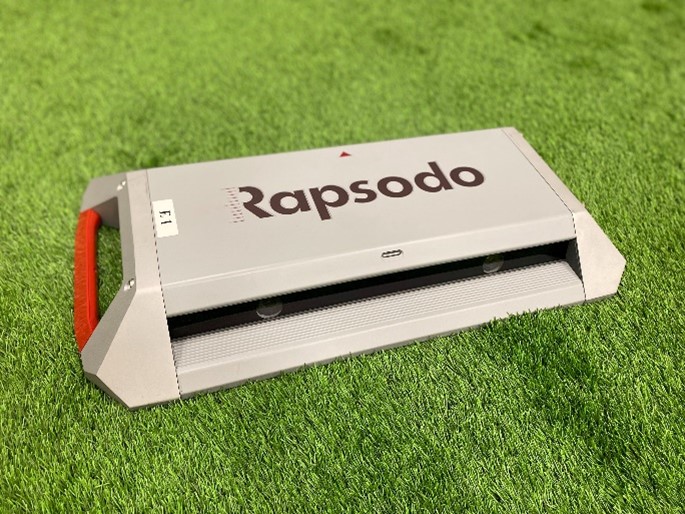
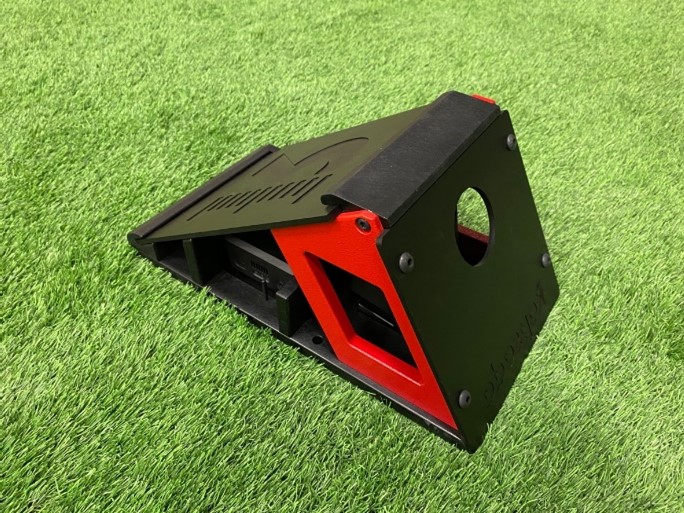
We currently house a Rapsodo PRO 3.0 and a Pitching 2.0 within the lab to capture spin metrics of each pitch. This data is then displayed on our 70” TV for each pitcher’s viewing convenience in between pitches. The PRO 3.0 unit is an updated version of the Pitching 2.0 unit and is what we primarily use during our bullpens. The PRO 3.0 unit is capable of capturing Live-On-Live data, or pitch and batted ball metrics, from the same pitch. From a standalone perspective, the amount of hitting and pitching metrics has also been increased from the 2.0. Hitting data includes fourteen outcomes including Exit Velocity, Launch Angle, Contact Depth, Spin Axis, and more! Twenty-two outcomes can be listed from the pitching side of things, including Release Angle, 3D pitch trajectories, True Spin, Seam Orientation, and more! Both the Rapsodo PRO 3.0 and Pitching 2.0 units have been an excellent addition to the information we provide our athletes as it’s critical to
monitor how changes to one’s throwing biomechanics affect their spin. If someone has an extremely unique spin on the ball, we take great care in making sure they don’t lose that ability through mechanical adjustments.
Around here, we view technology as a means to help guide the decision-making process. The numbers created from any given output aren’t necessarily treated as gospel but rather considered a missing piece to the puzzle that is player development. For instance, understanding how Biodex shoulder strength testing outcomes coincide with kinematics and kinetics collected from our force plates and motion capture cameras to further a support staff’s understanding of one’s risk for re-injury. Do we continue to monitor a player reporting pain/discomfort or do we shut them down for a given amount of time to avoid possible serious injury? If these questions interest you, stick around for next month’s post on how to understand kinetics from our biomechanics report!
Have an idea for our next post? Email us at bmchpitchinglab@unomaha.edu!